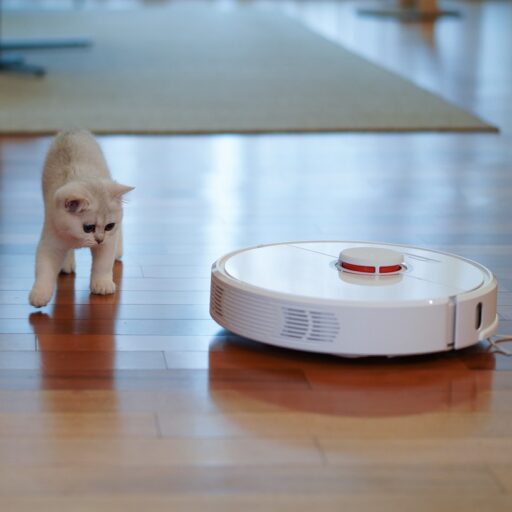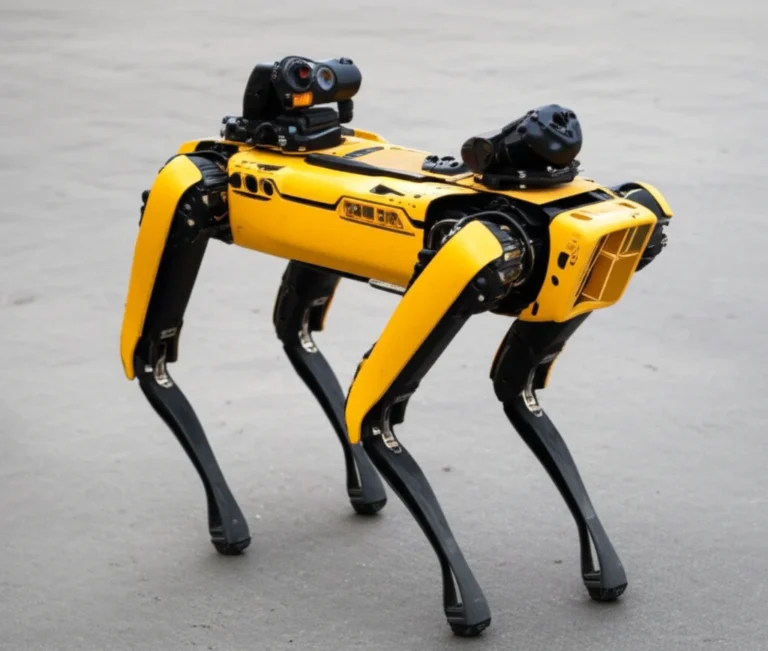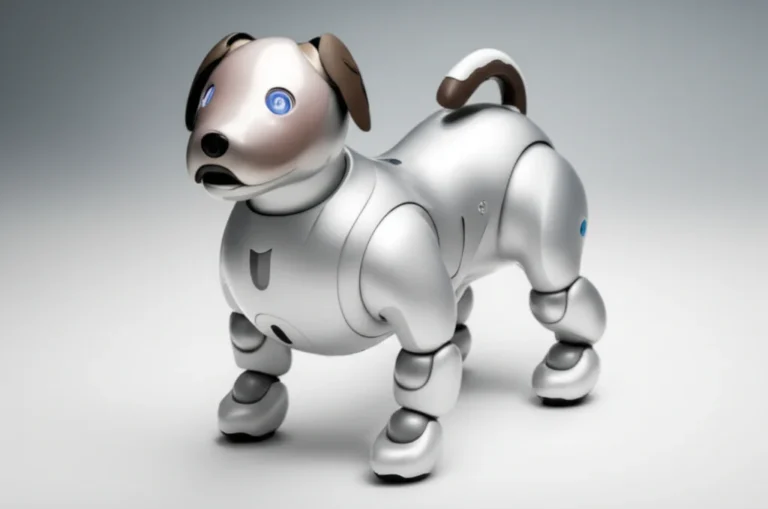Support our educational content for free when you purchase through links on our site. Learn more
🤖 The Ultimate 15-Step Robot Maintenance Guide (2025)
Imagine this: your state-of-the-art industrial robot suddenly halts mid-shift, leaving your production line in chaos and costing you thousands in downtime. We’ve been there, and trust us, it’s a nightmare you want to avoid. The good news? With a solid maintenance routine, you can keep your robotic workforce humming smoothly for years.
In this comprehensive 15-step guide, we’ll walk you through everything from daily visual inspections to advanced predictive maintenance strategies. Along the way, we’ll share insider tips from our robotics engineers at Robot Instructions™ and reveal how simple actions—like cleaning sensors or updating firmware—can prevent catastrophic failures. Curious about how often you should lubricate your robot or when it’s time to retire an aging unit? We’ve got you covered.
Ready to become your robot’s best friend and boost your operation’s uptime? Let’s dive in!
Key Takeaways
- Regular preventive maintenance is essential to avoid costly breakdowns and extend robot lifespan.
- A thorough 15-step checklist covers everything from lubrication to software updates and safety checks.
- Maintenance frequency varies: daily, weekly, monthly, quarterly, and annual tasks keep your robot in top shape.
- Safety protocols like Lockout/Tagout and E-stop testing protect your team during maintenance.
- Leveraging maintenance management software can streamline scheduling and tracking.
- Knowing when to decommission your robot responsibly ensures security and environmental compliance.
Stay tuned for our troubleshooting tips and expert advice on building a bulletproof maintenance program!
Table of Contents
- ⚡️ Quick Tips and Facts
- 🤖 The Unsung Heroes: Why Robot Maintenance Isn’t Just a Chore, It’s a Lifeline
- 🩺 Decoding Your Robot’s Health: Understanding Key Indicators
- 🛠️ Your Ultimate Robot Preventive Maintenance Checklist: 15 Essential Steps for Peak Performance
- 1. Visual Inspection: The First Line of Defense
- 2. Lubrication & Greasing: The Smooth Operator’s Secret
- 3. Cable & Hose Inspection: Preventing Tangled Troubles
- 4. End-of-Arm Tooling (EOAT) Check: Precision in Every Grip
- 5. Controller & Teach Pendant Care: The Brains of the Operation
- 6. Battery Health: Keeping the Lights On
- 7. Software & Firmware Updates: Staying Ahead of the Curve
- 8. Sensor Cleaning & Calibration: Seeing Clearly
- 9. Gearbox & Motor Inspection: The Powerhouse Check
- 10. Brake Functionality Test: Stopping Power
- 11. Cooling System Check: Keeping Your Robot Chill
- 12. Air Filters & Vents: Breathing Easy
- 13. Fastener Tightness: Holding It All Together
- 14. Data Backup & Recovery: Digital Safety Net
- 15. Environmental Scan: The Robot’s Habitat
- ⏰ Mastering the Clock: How Often Should You Maintain Your Robot?
- 🚨 Safety First, Always: Essential Industrial Robot Safety Protocols
- 🚀 Beyond the Basics: Advanced Robot Maintenance Strategies
- 💡 Building a Bulletproof Plan: 7 Tips for Developing an Effective Robot Preventive Maintenance Program
- 1. Start with Manufacturer Guidelines
- 2. Assess Your Robot’s Environment and Usage
- 3. Train Your Team Thoroughly
- 4. Document Everything: The Paper Trail to Perfection
- 5. Schedule Smart: Balancing Uptime and Upkeep
- 6. Embrace Technology: CMMS and EAM Systems
- 7. Continuous Improvement: Learning from Every Service
- 💰 The ROI of TLC: Unpacking the Benefits of Regular Robot Upkeep
- 💻 The Digital Handyman: Leveraging Robot Maintenance Management Software
- ♻️ When It’s Time to Say Goodbye: Responsible Robot Decommissioning
- ✅ Conclusion: Your Robot’s Best Friend
- 🔗 Recommended Links: Dive Deeper!
- ❓ FAQ: Your Burning Robot Maintenance Questions Answered
- 📚 Reference Links: Our Sources of Wisdom
Here at Robot Instructions™, we’ve seen it all. From gleaming new robotic arms executing tasks with balletic precision to seasoned veterans of the factory floor looking a little worse for wear. What separates the marathon runners from the sprinters in the world of automation? It’s not just about the initial programming or the quality of the build. The secret, my friends, is maintenance.
Think of your robot less like a tireless machine and more like a high-performance athlete. It needs the right fuel, regular check-ups, and a solid recovery plan to stay at the top of its game. Neglect it, and you’re looking at a costly trip to the robotic ER. So, grab a cup of coffee, and let’s dive into the ultimate guide to keeping your robotic workforce in peak condition.
⚡️ Quick Tips and Facts
Pressed for time? Here’s the high-level download on robot maintenance.
| Quick Fact 💡 – The Golden Rule: Always, always start with the manufacturer’s maintenance manual. It’s your robot’s bible.
- Downtime Cost: The average cost of IT downtime can be a staggering $5,600 per minute. Regular maintenance is your best insurance policy against this.
- Safety First: Proper maintenance isn’t just about performance; it’s a critical safety measure that protects your human team from accidents.
- Small Issues, Big Problems: “Scheduled preventative maintenance helps in locating and addressing minor issues before they become bigger, more expensive issues.”
- Frequency Matters: Maintenance isn’t a one-and-done deal. It requires a schedule of daily, monthly, quarterly, and annual checks.
- Cleanliness is Key: From sensors to cooling fans, a clean robot is a happy and efficient robot. Dust and debris are silent assassins of performance.
- Software is Hardware Too: Keeping your robot’s software and firmware updated is just as crucial as tightening its bolts.
🤖 The Unsung Heroes: Why Robot Maintenance Isn’t Just a Chore, It’s a Lifeline
Let’s be honest, maintenance can feel like a drag. When production is humming along, the last thing you want to do is power down a key asset for a check-up. But what happens when that metallic marvel starts to stutter, slow down, or worse, stop altogether? Suddenly, that “inconvenient” maintenance schedule looks like a stroke of genius.
A Glimpse into the Evolution of Robotic Upkeep
Back in the early days of industrial automation, robots were hulking, hydraulic beasts that leaked oil and required constant tinkering. Maintenance was a messy, reactive affair. Today’s robots, from brands like FANUC and KUKA, are sleek, electric-driven machines powered by sophisticated Artificial Intelligence and Machine Learning. But don’t let their refined nature fool you; they still need regular TLC. The focus has simply shifted from reactive repairs to proactive, predictive, and preventive care.
The True Cost of Neglect: Why Skipping Maintenance is a Recipe for Disaster
We once got a call from a frantic plant manager. Their main packaging robot, a trusty ABB model, had gone down right in the middle of their busiest season. The culprit? A frayed cable that had been slowly wearing down for months. A simple visual inspection, part of any basic daily check, would have caught it. Instead, they faced two days of downtime, thousands in lost revenue, and a hefty emergency repair bill.
This isn’t a rare story. Skipping maintenance is a gamble where the house always wins. You’re betting against:
- Sudden Breakdowns: The most obvious and disruptive consequence.
- Decreased Performance: Robots lose accuracy and speed over time without calibration and care, leading to lower product quality.
- Safety Hazards: Worn-out brakes, faulty sensors, or damaged safety circuits can lead to dangerous, even catastrophic, accidents.
- Shortened Lifespan: A well-maintained robot can be a workhorse for a decade or more. A neglected one might not make it half that long.
🩺 Decoding Your Robot’s Health: Understanding Key Indicators
Your robot can’t tell you when it’s feeling under the weather, but it will give you signs. You just need to know how to read them. Think of yourself as a robot whisperer.
Listening to Your Robot: Alarms, Errors, and Performance Dips
- Unusual Noises: Grinding, whining, or excessive vibration are the robot’s equivalent of a cough. It’s a clear sign that something is wrong, often related to gears, motors, or bearings.
- Error Codes: Don’t just clear them and move on! Log them. A recurring error code, even a minor one, is a breadcrumb trail leading to an underlying problem.
- Repeatability Issues: Is your robot suddenly placing items just a few millimeters off its mark? This loss of precision is a classic sign that it’s due for a check-up and recalibration.
- Sluggishness: If the robot’s movements seem slower or less fluid, it could be anything from a lubrication issue to a problem with the drive system.
The Language of Lubrication: What to Look For
Grease and oil are the lifeblood of your robot’s joints.
- ✅ Good: A thin, clean film of lubricant on moving parts.
- ❌ Bad: Leaking seals, evidenced by puddles of oil or grease splatters. This is a major red flag.
- ❌ Ugly: Grease that is dark, gritty, or milky. This indicates contamination or breakdown and means it’s long past time for a change.
🛠️ Your Ultimate Robot Preventive Maintenance Checklist: 15 Essential Steps for Peak Performance
Ready to get your hands dirty (metaphorically, of course… wear gloves!)? Here is our comprehensive checklist, born from years on the factory floor. This goes beyond the basics to cover all the Robotic Applications you might encounter.
1. Visual Inspection: The First Line of Defense
Walk around the robot. Look for any signs of damage, loose bolts, or wear and tear. This simple, daily check can prevent a huge percentage of failures.
2. Lubrication & Greasing: The Smooth Operator’s Secret
Check lubricant levels and look for leaks. Follow the manufacturer’s schedule for re-greasing joints and replacing oil. Don’t mix lubricants!
3. Cable & Hose Inspection: Preventing Tangled Troubles
Examine all electrical cables and pneumatic/hydraulic hoses. Look for kinks, cuts, abrasions, or signs of rubbing. Ensure they are properly secured and not stretched or pinched during the robot’s movement.
4. End-of-Arm Tooling (EOAT) Check: Precision in Every Grip
The EOAT (gripper, welder, sensor, etc.) is where the magic happens. Check for wear on grippers, ensure all connections are tight, and verify that sensors are clean and functional.
5. Controller & Teach Pendant Care: The Brains of the Operation
The controller cabinet is the robot’s brain. Ensure cooling fans are running and filters are clean. Inspect the teach pendant and its cable for damage – a dropped pendant is a common and costly repair.
6. Battery Health: Keeping the Lights On
Most robots have batteries for memory backup in both the controller and the robot arm itself. These need to be tested and replaced annually to prevent the loss of critical program and position data.
7. Software & Firmware Updates: Staying Ahead of the Curve
Check with your manufacturer for any recommended software or firmware updates. These can provide new features, improve performance, and patch security vulnerabilities.
8. Sensor Cleaning & Calibration: Seeing Clearly
Vision systems, proximity sensors, and safety sensors need to be clean to function correctly. Gently wipe them down. Periodically verify their accuracy and recalibrate as needed.
9. Gearbox & Motor Inspection: The Powerhouse Check
Listen for any unusual noises coming from the motors or gearboxes. Some advanced systems allow for vibration analysis to predict failures before they happen.
10. Brake Functionality Test: Stopping Power
Verify that the brakes on each axis are holding correctly. You can often do this through a function in the robot’s software. A failing brake is a serious safety risk.
11. Cooling System Check: Keeping Your Robot Chill
Clean the vents and cooling fans of the controller cabinet with compressed air. Overheating is a death sentence for electronics.
12. Air Filters & Vents: Breathing Easy
Just like your home’s HVAC system, your robot’s controller has filters that need to be cleaned or replaced regularly to ensure proper airflow.
13. Fastener Tightness: Holding It All Together
Robots vibrate, and over time, bolts can loosen. Annually, check the tightness of all external mounting bolts, especially those securing the robot to its base.
14. Data Backup & Recovery: Digital Safety Net
Regularly back up the robot’s controller memory. If the controller fails, having a recent backup can save you days of reprogramming.
15. Environmental Scan: The Robot’s Habitat
Is the robot’s work area clean and free of debris? Are there any new environmental factors (like excessive dust from a new process) that could affect the robot?
⏰ Mastering the Clock: How Often Should You Maintain Your Robot?
So, you have the checklist, but when do you actually do all this stuff? The answer is: it depends. Your manufacturer’s manual is the ultimate authority. However, a great starting point is to break it down into a tiered schedule.
Daily Checks: Quick Peeks for Peace of Mind
- ✅ Visual inspection for obvious damage or leaks.
- ✅ Check the area around the robot for any obstructions.
- ✅ Listen for unusual noises during operation.
- ✅ Wipe down any critical sensors or camera lenses.
Weekly Wonders: Deeper Dives
- ✅ Check teach pendant and cable for damage.
- ✅ Inspect end-of-arm tooling for wear.
- ✅ Test run the robot through its full range of motion to spot any hitches.
Monthly Must-Dos: Routine Rhythms
- ✅ Clean controller cabinet filters.
- ✅ Inspect cables and hoses for wear.
- ✅ Check lubricant levels.
- ✅ Backup the controller memory.
Quarterly Quests: Seasonal Scans
- ✅ Check tightness of external mounting bolts.
- ✅ Test safety systems like E-stops and light curtains.
- ✅ Check batteries for charge status.
Annual Adventures: The Grand Overhaul
- ✅ Replace all batteries (controller and robot arm).
- ✅ Replace grease and oil according to manufacturer specifications.
- ✅ Perform a thorough inspection of all joints, bearings, and drive components.
- ✅ Conduct a full functional test to ensure the robot meets its performance specifications.
Condition-Based Monitoring: Smart Maintenance for Smart Robots
The future is now! Many modern robots can be equipped with sensors that monitor their own health (vibration, temperature, etc.). This allows you to move from a fixed schedule to “condition-based” maintenance, addressing issues as they begin to develop, but before they cause a failure.
🚨 Safety First, Always: Essential Industrial Robot Safety Protocols
We can’t talk about maintenance without talking about safety. A powered-down robot isn’t necessarily a safe robot. Energy can be stored in hydraulic or pneumatic systems, and gravity is always a factor.
Establishing Safe Work Zones: Fencing and Light Curtains
Physical barriers like fences with interlocked gates are non-negotiable. They create a clear boundary that, when crossed, automatically stops the robot. Light curtains and area scanners provide a more flexible but equally critical safety barrier.
Emergency Stop (E-Stop) Procedures: The Big Red Button
Every work cell must have clearly visible and accessible E-stop buttons. Everyone who works near the robot must know where they are and how to use them. During maintenance, test every single one.
Lockout/Tagout (LOTO): Powering Down Safely
This is one of the most critical safety procedures. Before any maintenance, the robot must be de-energized from its main power source, and a lock and tag must be applied by the person performing the work. This ensures the power cannot be accidentally turned back on. The Occupational Safety and Health Administration (OSHA) has strict guidelines on this.
Personal Protective Equipment (PPE): Your Armor
Always wear the appropriate PPE, which may include safety glasses, steel-toed boots, gloves, and hard hats, depending on the task and the environment.
Training and Certification: Knowledge is Power
Only qualified and trained personnel should ever perform maintenance on a robot. This isn’t a job for the summer intern. Ensure your team has received manufacturer-specific training.
🚀 Beyond the Basics: Advanced Robot Maintenance Strategies
Once you’ve mastered the fundamentals, you can level up your maintenance game.
Predictive Maintenance: Foreseeing the Future
This is the holy grail. By using sensors and data analytics, you can predict when a component is likely to fail and replace it before it breaks. This minimizes downtime and maximizes the life of your components. It’s a key application of industrial Artificial Intelligence.
Robot Calibration: Keeping Your Robot on Point
Over thousands of hours, a robot’s mechanical structure can “settle,” affecting its accuracy. Specialized tools, like laser trackers, can be used to recalibrate the robot, restoring its original precision. This is crucial for tasks like welding, dispensing, or high-precision assembly.
Spare Parts Management: Having What You Need, When You Need It
What’s worse than a robot breaking down? A robot breaking down and having to wait two weeks for a part to arrive from overseas. Maintain a critical spares list. For common wear items like batteries, cables, and filters, keep them in stock. For more expensive items like motors or teach pendants, know your supplier’s lead time.
Troubleshooting Common Robotic Issues: DIY Diagnostics
| Issue | Possible Cause(s) | What to Check First – Robot won’t power on | No power, E-stop pressed, blown fuse | Check main power disconnect, check all E-stop buttons, inspect fuses in the controller. – “Position not accurate” errors | Needs calibration, encoder issue, loose mounting | Run the robot’s mastering/calibration routine. Check that the robot is securely bolted to its base. – “Communication error” with EOAT | Damaged cable, loose connector, configuration issue | Inspect the cable running to the end-of-arm tooling. Reseat the connectors at both the tool and the robot arm. – Overheating alarms | Clogged filters, failed fan, blocked vents, high ambient temperature | Clean all air filters and vents. Ensure fans in the controller are spinning. Check the ambient temperature of the work cell. –
💡 Building a Bulletproof Plan: 7 Tips for Developing an Effective Robot Preventive Maintenance Program
A checklist is great, but a full-blown program is even better. Here’s how to build one that works.
1. Start with Manufacturer Guidelines
This is your foundation. The people who built the robot know it best. Use their recommended schedule and procedures as your starting point.
2. Assess Your Robot’s Environment and Usage
A robot welding in a dusty foundry needs more frequent filter cleanings than one assembling electronics in a cleanroom. Adjust your schedule based on the harshness of the environment and the robot’s duty cycle.
3. Train Your Team Thoroughly
Invest in training. Your maintenance team should be comfortable with both the mechanical and software aspects of your robots. This includes safety training, which is non-negotiable.
4. Document Everything: The Paper Trail to Perfection
Create a logbook for each robot. Record every maintenance task, every error code, and every part replaced. This history is invaluable for troubleshooting and identifying trends.
5. Schedule Smart: Balancing Uptime and Upkeep
Plan your maintenance during scheduled downtime, between shifts, or on weekends to minimize the impact on production. Communicate the schedule clearly to all stakeholders.
6. Embrace Technology: CMMS and EAM Systems
Use a Computerized Maintenance Management System (CMMS) or Enterprise Asset Management (EAM) software to schedule tasks, track work orders, manage spare parts inventory, and analyze maintenance data.
7. Continuous Improvement: Learning from Every Service
Your maintenance plan shouldn’t be static. Regularly review your maintenance logs and data. Are certain components failing more often than expected? Maybe you need to adjust your schedule or look for a more robust part.
💰 The ROI of TLC: Unpacking the Benefits of Regular Robot Upkeep
Investing in maintenance isn’t a cost; it’s a high-return investment. Here’s the payoff:
- Extended Robot Lifespan: You’ll maximize the life of your very expensive asset, lowering the total cost of ownership.
- Reduced Downtime: Proactive care prevents the vast majority of breakdowns, keeping your production lines running smoothly.
- Optimized Performance & Accuracy: A well-maintained robot works faster and more accurately, leading to higher throughput and better product quality.
- Enhanced Safety: A properly functioning robot is a safer robot, protecting your most valuable asset: your people.
- Lower Operating Costs: Preventing major failures is far cheaper than fixing them. You’ll also see benefits like reduced energy consumption.
💻 The Digital Handyman: Leveraging Robot Maintenance Management Software
Manually tracking maintenance for a fleet of robots is a recipe for missed tasks and headaches. This is where a CMMS comes in. These software platforms are game-changers for any serious maintenance program.
What to Look For in a CMMS/EAM System
- Asset Management: Ability to create a detailed record for each robot.
- Work Order Management: Easily create, assign, and track maintenance tasks.
- Preventive Maintenance Scheduling: Automate the scheduling of recurring tasks.
- Inventory Management: Keep track of your spare parts.
- Reporting and Analytics: Generate reports to track costs, identify trends, and measure performance.
- Mobile Access: Allows technicians to access information and update work orders from the factory floor.
Popular Software Solutions: A Glimpse at the Market
There are many great options out there, each with its own strengths. Some popular choices in the industrial space include:
♻️ When It’s Time to Say Goodbye: Responsible Robot Decommissioning
All good things must come to an end, even for our robotic friends. When a robot reaches the end of its useful life, decommissioning it properly is a critical final step.
Planning for Retirement: The End-of-Life Cycle
Don’t wait until the robot is on its last legs. Consider decommissioning when:
- The cost and frequency of repairs become unsustainable.
- Replacement parts are becoming obsolete and hard to find.
- The robot’s technology can no longer keep up with your production needs.
Data Wiping and Security
Before you sell or scrap a robot, ensure all proprietary program data is securely wiped from its controller. This is a crucial cybersecurity step.
Environmental Disposal and Recycling
Robots contain materials that can be harmful to the environment if not disposed of correctly, such as batteries and electronic components. Work with a certified e-waste recycling company to ensure your old robot is decommissioned responsibly. Many robot manufacturers also offer take-back or recycling programs.
✅ Conclusion: Your Robot’s Best Friend

Well, we’ve journeyed through the nuts and bolts of robot maintenance, and if there’s one takeaway, it’s this: maintenance isn’t just a chore — it’s the lifeline that keeps your robotic workforce thriving. From daily visual inspections to annual overhauls, each step plays a vital role in preventing costly breakdowns, ensuring safety, and squeezing every ounce of performance and lifespan out of your investment.
Remember the story about the ABB robot that went down mid-season? That could have been avoided with just a little vigilance. The moral? Don’t wait for the robot to scream for help — listen to its subtle cues and act proactively.
Whether you’re managing a single collaborative robot or a fleet of industrial giants from FANUC, KUKA, or ABB, tailoring your maintenance program to the robot’s environment and usage is key. Embrace technology like CMMS software to keep everything organized and predictive maintenance to stay ahead of failures.
And when the time comes to retire your robot, do it responsibly — wipe data, recycle parts, and plan ahead to avoid surprises.
In short, be your robot’s best friend, and it will reward you with years of reliable, precise, and safe service.
🔗 Recommended Links: Dive Deeper!
Ready to gear up your maintenance game? Check out these trusted tools, software, and resources:
-
FANUC Robots:
Amazon FANUC Search | FANUC Official Website -
KUKA Robotics:
Amazon KUKA Search | KUKA Official Website -
ABB Robotics:
Amazon ABB Search | ABB Official Website -
Fiix CMMS Software:
Fiix Official Website -
UpKeep CMMS Software:
UpKeep Official Website -
eMaint CMMS Software:
eMaint Official Website -
IBM Maximo:
IBM Maximo Official Website -
Recommended Books on Robot Maintenance:
- Robotics: Modelling, Planning and Control by Bruno Siciliano and Lorenzo Sciavicco — Amazon Link
- Robot Maintenance and Troubleshooting by Peter Smid — Amazon Link
- Industrial Robotics: Programming, Simulation and Applications by Sam Cubero — Amazon Link
❓ FAQ: Your Burning Robot Maintenance Questions Answered

What are the essential tools needed for robot maintenance?
Answer:
A well-equipped maintenance kit is your best friend. Essentials include:
- Basic hand tools: Screwdrivers (Phillips and flathead), hex keys/Allen wrenches, pliers, and adjustable wrenches.
- Torque wrench: To ensure bolts are tightened to manufacturer specs.
- Multimeter: For electrical diagnostics and checking continuity or voltage.
- Compressed air canister or compressor: For cleaning dust from sensors and electronics.
- Cleaning supplies: Lint-free cloths, isopropyl alcohol, and soft brushes for delicate components.
- Lubricants: Manufacturer-recommended grease and oils.
- Diagnostic software and cables: Often provided by the robot manufacturer for controller diagnostics and firmware updates.
Having these tools on hand allows you to perform both routine and advanced maintenance efficiently.
Read more about “The Ultimate Robot Operating Manual Guide: 15 Must-Know Secrets (2025) 🤖”
How often should industrial robots undergo maintenance?
Answer:
Maintenance frequency depends on the robot’s model, environment, and usage intensity. However, a general guideline is:
- Daily: Visual inspections, cleaning sensors, and checking for obvious issues.
- Weekly: Inspect cables, EOAT, and perform test runs.
- Monthly: Clean filters, backup data, check lubrication levels.
- Quarterly: Tighten bolts, test safety systems, check batteries.
- Annually: Replace batteries, grease, perform full calibration and functional tests.
Always refer to your robot’s manufacturer manual for specific schedules. In harsh environments or heavy-duty applications, increase the frequency accordingly.
What are common signs that a robot needs servicing?
Answer:
Watch out for:
- Unusual noises like grinding or whining.
- Decreased precision or repeatability errors.
- Sluggish or jerky movements.
- Frequent error codes or alarms.
- Visible leaks of oil or grease.
- Overheating warnings or excessive fan noise.
- Loose or damaged cables and hoses.
Ignoring these signs can lead to costly breakdowns and safety risks.
How can I perform routine cleaning on my robot?
Answer:
Routine cleaning involves:
- Powering down and locking out the robot.
- Using compressed air to blow dust from sensors, vents, and electronics.
- Wiping down surfaces with lint-free cloths and isopropyl alcohol to remove grime.
- Cleaning camera lenses and vision system components gently.
- Removing debris from the work area to prevent contamination.
Avoid harsh chemicals or abrasive materials that can damage sensitive components.
Read more about “The Ultimate Robot User Guide: Master Your Bot in 2025 🤖”
What safety precautions should be taken during robot maintenance?
Answer:
Safety is paramount:
- Always follow Lockout/Tagout (LOTO) procedures to ensure the robot cannot power on unexpectedly.
- Wear appropriate Personal Protective Equipment (PPE) such as safety glasses, gloves, and steel-toed boots.
- Verify that all emergency stops and safety interlocks are functional before and after maintenance.
- Only trained and authorized personnel should perform maintenance.
- Keep the work area clean and well-lit.
- Never bypass safety devices or operate the robot with known faults.
How do I troubleshoot common robot malfunctions?
Answer:
Start with the basics:
- Check power supply and emergency stops.
- Review error codes and consult the robot’s manual for diagnostics.
- Inspect cables and connectors for damage or loose connections.
- Perform test runs to isolate the issue to a specific joint or system.
- Use diagnostic software tools provided by the manufacturer.
- If the problem persists, contact the manufacturer’s support or a certified technician.
Read more about “Is the Litter-Robot Self-Cleaning? 15 Things You Need to Know (2025) 🤖🐾”
What are the best practices for extending the lifespan of robots?
Answer:
Key practices include:
- Adhering strictly to preventive maintenance schedules.
- Keeping the robot and its environment clean and free of contaminants.
- Using only manufacturer-approved lubricants and replacement parts.
- Training operators and maintenance staff thoroughly.
- Monitoring robot health with condition-based or predictive maintenance technologies.
- Documenting all maintenance activities to identify trends and preempt failures.
Read more about “Do Robot Instruction Manuals Include Maintenance Schedules? 🤖 (2025)”
How can maintenance software improve robot upkeep?
What features should I look for in robot maintenance software?
Answer:
Maintenance software streamlines scheduling, tracking, and reporting. Look for:
- Automated preventive maintenance scheduling.
- Work order management with status tracking.
- Inventory management for spare parts.
- Mobile access for technicians on the floor.
- Integration with IoT sensors for condition monitoring.
- Analytics dashboards to identify failure patterns.
Read more about “How Well Do Robot Vacuums Work? 10 Insights You Need! 🤖 …”
When should I consider robot decommissioning?
Answer:
Consider decommissioning when:
- Repair costs and downtime exceed the value of keeping the robot operational.
- Replacement parts become unavailable or obsolete.
- The robot no longer meets production requirements or safety standards.
- Newer technology offers significant efficiency or capability improvements.
Plan decommissioning carefully to ensure data security and environmental responsibility.
📚 Reference Links: Our Sources of Wisdom
- FANUC Official Site
- KUKA Robotics
- ABB Robotics
- OSHA Lockout/Tagout Guidelines
- Fiix CMMS Software
- UpKeep CMMS Software
- eMaint CMMS
- IBM Maximo
- UptimeRobot: Mastering Website Maintenance: Your Ultimate Guide
- Robot Instructions™ – Artificial Intelligence Category
- Robot Instructions™ – Machine Learning Category
- Robot Instructions™ – Robotic Applications Category
- Robot Instructions™ – Agricultural Robotics Category
- Robot Instructions™ – Robotic Applications in Entertainment
We hope this guide has empowered you to become the ultimate caretaker of your robotic workforce. Remember, a well-maintained robot is not just a machine — it’s a partner in innovation and productivity. Keep those gears greased and those sensors sparkling! 🚀🤖






